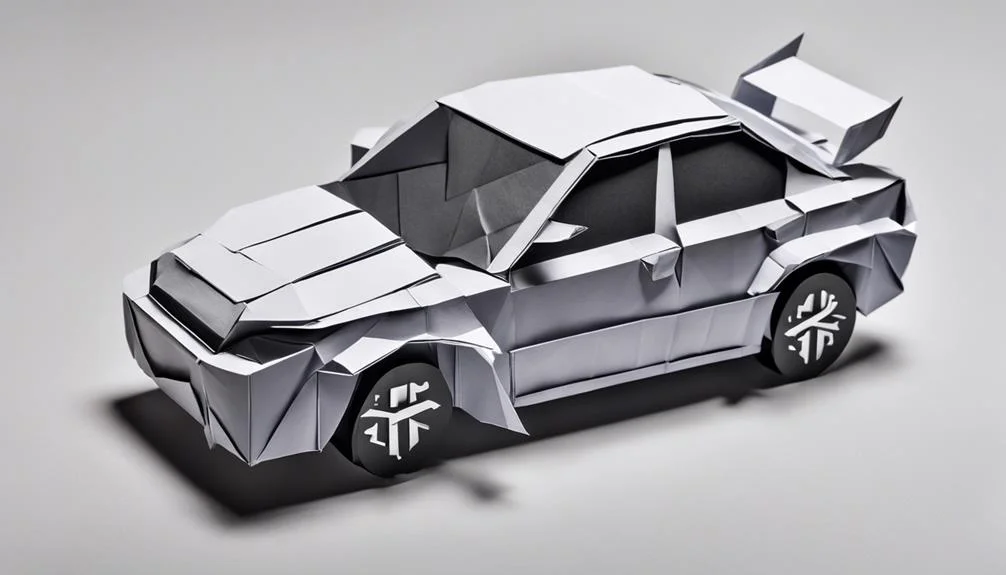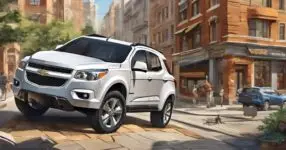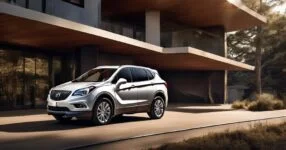The pros of Subarus are good value for price, high resale value, generous ground clearance, and easy-to-use infotainment system. The vehicles perform well in snow, have comfortable front seats, good gas mileage, and a punchy engine.
The cons of Subarus are the CVT transmission is expensive to replace, limited storage capacity, modest tow rating, and lackluster acceleration. Engine reliability issues, underpowered engine, and limited child safety seat installation options detract from the experience.
Takeaways:
- Subaru vehicles are celebrated for their reliability, safety, and high resale value.
- Concerns include engine reliability issues, such as head gasket and turbocharger failures.
- Advanced safety features and all-wheel drive capabilities provide superior protection and traction.
- The symmetrical all-wheel drive system may lead to lower fuel efficiency, particularly in urban settings.
| Pros of Subaru | Cons of Subaru |
|---|---|
| Excellent Safety Ratings | Perceived Exterior Styling |
| Standard All-Wheel Drive | CVT Concerns |
| Respectable Resale Value | Engine Reliability Issues |
| Adventure-Ready Designs | Underpowered Feel |
| Fuel Efficiency | Limited Towing Capacity |
| Comfortable Interiors | Limited Interior Space |
| Comprehensive Infotainment | Child Safety Seat Challenges |
| Environmental Commitment | Infotainment Learning Curve |
| Robust Engine Performance | Noise and Vibration |
| High Owner Satisfaction | Premium Fuel Requirement |
Pros of Subaru
- Excellent Safety Ratings: Subaru vehicles often receive high safety ratings from institutions such as the IIHS and NHTSA, reflecting the brand’s commitment to safety. The implementation of Subaru’s EyeSight Driver Assist Technology, which includes features like automatic pre-collision braking and lane keep assist, contributes to these ratings. This technology has been proven to reduce rear-end crashes with injuries by up to 85%.
- Standard All-Wheel Drive: Most Subaru models come with standard all-wheel drive, providing superior traction and performance in a variety of driving conditions, including snow and rain. This feature sets Subaru apart from many competitors, who often offer all-wheel drive as an expensive optional upgrade.
- Respectable Resale Value: Subaru vehicles are known for their strong resale value over time. This is due to the brand’s reputation for durability, reliability, and the capability of their vehicles, making them a smart investment for buyers looking for a vehicle that holds its value.
- Adventure-Ready Designs: With generous ground clearance and robust construction, Subaru vehicles are designed for adventure. Models like the Subaru Outback and Forester are well-suited for off-road excursions, providing the versatility that outdoor enthusiasts seek.
- Fuel Efficiency: Despite their all-wheel-drive systems, many Subaru models offer good fuel economy. This is thanks to efficient engine designs and the continuously variable transmission (CVT), which optimizes fuel consumption across different driving conditions.
- Comfortable and Practical Interiors: Subaru vehicles are praised for their well-thought-out cabin designs, comfortable front seats, and user-friendly infotainment systems. These aspects make for an enjoyable and comfortable driving experience, especially on long journeys.
- Comprehensive Infotainment Features: The easy-to-use infotainment system in Subaru vehicles supports modern needs with features like smartphone integration, Bluetooth connectivity, and navigation, enhancing the overall driving experience.
- Environmental Commitment: Subaru is known for its commitment to environmental stewardship, with initiatives aimed at reducing waste and preserving natural resources. This commitment is reflected in their manufacturing processes and the recyclability of their vehicles.
- Robust Engine Performance: Subaru’s use of boxer engines in their vehicles offers a low center of gravity and balanced performance, contributing to a smoother ride and better handling. Some models also feature turbocharged engines that provide a punchy driving experience.
- High Owner Satisfaction: Subaru has a loyal customer base, with many owners expressing high satisfaction with their vehicles. This loyalty is often due to the brand’s reliability, performance, and the sense of community among Subaru owners.
Cons of Subaru
- Perceived Exterior Styling: While functional, the exterior design of some Subaru models is considered lackluster or conservative by some buyers. This can detract from the vehicle’s appeal to those seeking a more distinctive or aggressive aesthetic.
- CVT Concerns: Although the CVT contributes to fuel efficiency, some drivers find its performance lackluster, particularly in terms of acceleration and responsiveness. Additionally, there are concerns about the long-term reliability and potential high cost of replacement for CVT transmissions.
- Engine Reliability Issues: Certain Subaru models have faced engine reliability issues, such as head gasket problems, which can be costly to repair. This has affected the brand’s reputation for reliability to some extent.
- Underpowered Feel: Some of Subaru’s vehicles, particularly those with the base engines, can feel underpowered, especially when fully loaded or climbing steep grades. This can affect driving enjoyment and performance expectations.
- Limited Towing Capacity: Subaru vehicles generally offer modest towing capacities, which may not meet the needs of buyers looking to tow larger trailers or boats. This limits the utility of Subaru vehicles for certain outdoor activities.
- Interior Space and Storage: While comfortable, some Subaru models offer limited storage capacity and cargo space compared to competitors. This can be a drawback for families or individuals who require significant storage for travel and activities.
- Child Safety Seat Installation Challenges: Some Subaru models have been noted for having limited options and space for the easy installation of child safety seats. This can be a concern for families prioritizing child passenger safety.
- Infotainment System Learning Curve: Despite being comprehensive, some users find the infotainment system in Subaru vehicles to have a learning curve. New users may find it difficult to navigate or utilize all features effectively at first.
- Noise and Vibration: Some drivers report experiencing higher levels of road noise and vibration in certain Subaru models, which can detract from the vehicle’s overall comfort during long drives.
- Premium Fuel Requirement for Some Models: Turbocharged Subaru models often require premium fuel to achieve the advertised performance levels, which can increase the cost of ownership over time compared to vehicles that run efficiently on regular unleaded gasoline.
Benefits of Owning a Subaru
Subaru vehicles stand out in the automotive market due to their notable combination of reliability, safety, and technological advancements, offering significant advantages to their owners. These cars are renowned for their ability to maintain value, depreciating by only 24% after five years. This impressive retention rate not only provides owners with peace of mind but also ensures high levels of satisfaction by securing a strong resale value. Such financial resilience is a testament to the brand’s commitment to quality and durability.
Beyond the economic benefits, Subaru’s reputation for reliability and safety is a major draw for consumers. The integration of all-wheel drive across most of its lineup enhances vehicle handling and performance in various driving conditions, promoting a sense of security among its users. Additionally, Subaru’s focus on incorporating user-friendly technology further enriches the driving experience. Intuitive controls and an advanced infotainment system make for an engaging and convenient journey, allowing drivers to stay connected and entertained with ease.
The combination of these factors—resale value, reliability, all-wheel drive capabilities, and innovative technology—makes owning a Subaru a wise choice for those prioritizing a safe, enjoyable, and economically prudent driving experience.
Common Subaru Drawbacks

While Subaru vehicles are celebrated for their durability and versatility, certain aspects of ownership can present challenges. Concerns over engine reliability and higher-than-average maintenance costs have emerged as notable drawbacks.
These factors necessitate a closer examination of the long-term value and operational efficiency of Subaru models.
Engine Reliability Concerns
Addressing engine reliability concerns reveals common drawbacks in various Subaru models. Notably, issues such as head gasket durability and oil consumption stand out. Subaru engines, particularly older 2.5-liter boxer variants, have a notorious history of head gasket issues, which lead to costly repairs. Similarly, high-performance models like the WRX and STI are prone to ringland failure, an issue exacerbated by the demanding nature of their engines.
Oil consumption problems, particularly in the 2.0-liter and 2.5-liter engines, pose risks of internal damage, affecting the vehicle’s performance and longevity. Additionally, turbocharged Subaru models face turbocharger failures, while timing belt or chain complications can severely impact engine functionality. These issues necessitate prompt and often expensive interventions to avert further damage.
High Maintenance Costs
Beyond engine reliability concerns, another significant challenge faced by Subaru owners pertains to the brand’s maintenance costs. Subaru vehicles are often pricier to maintain than some competitors, attributed to specialized parts and advanced technologies. Notably, the boxer engine layout, a hallmark of Subaru design, necessitates more labor-intensive and time-consuming maintenance work.
Additionally, the brand’s hallmark all-wheel drive systems typically require more frequent servicing, further inflating ownership expenses. Reports also indicate that some Subaru models demand more frequent repairs and replacements, thus elevating long-term maintenance costs. While Subaru vehicles are celebrated for their reliability and robust safety features, these attributes contribute to the higher cost of upkeep, making maintenance a notable concern for owners.
Safety Features Overview

Emphasizing safety at its core, Subaru incorporates advanced technologies like the Subaru EyeSight system to enhance vehicle safety features. This innovative suite has positioned Subaru as a leader in automotive safety, focusing on accident prevention measures that are crucial for driver and passenger protection. Technologies such as pre-collision braking and blind-spot detection are pivotal in mitigating potential accidents, underlining the brand’s commitment to not just responding to accidents, but actively working to prevent them.
Subaru vehicles are also equipped with an extensive array of airbags, providing a comprehensive cushioning system designed to protect occupants from multiple angles in the event of a collision. This layered approach to safety, combining preemptive measures with robust protective features, ensures a high level of security for all passengers.
The focus on safety is further exemplified by Subaru’s dedication to maintaining these features across long drives, ensuring that drivers can enjoy peace of mind and sustained protection no matter the journey’s length. This relentless pursuit of safety excellence underscores Subaru’s commitment to delivering top-notch safety systems, offering both drivers and passengers unparalleled security and comfort on the road.
All-Wheel Drive Capabilities

Subaru’s all-wheel drive system is engineered to deliver unparalleled stability, traction, and fuel efficiency across a diverse range of terrains. This system is meticulously designed to offer not just performance but also peace of mind in varying driving conditions. Subaru vehicles, renowned for their reliability and durability, excel in both urban environments and off-road trails, making them a favored choice for those who demand versatility without compromise.
- Superior traction in wet and slippery conditions inspires confidence during unforeseen weather changes.
- Enhanced stability across uneven terrains offers a sense of security for adventurous spirits seeking off-road escapades.
- Optimal fuel efficiency in challenging conditions ensures that the joy of exploration is not overshadowed by concerns over fuel consumption.
- The system’s durability reduces the likelihood of mechanical failures, reassuring drivers of a dependable companion in their journeys.
- The reliability in harsh weather conditions empowers outdoor enthusiasts to embrace the elements, fostering a deeper connection with nature.
In essence, Subaru’s all-wheel drive capabilities represent a harmonious blend of technology, engineering, and a deep understanding of driver needs, ensuring a driving experience that is as rewarding as it is reliable.
Fuel Efficiency Concerns

While Subaru’s all-wheel drive system offers exceptional stability and traction, it is important to consider its impact on fuel efficiency. The symmetrical all-wheel drive, a hallmark of Subaru vehicles, contributes to added weight and increased aerodynamic drag. This can lead to a noticeable decrease in fuel economy, particularly in urban driving scenarios where stop-and-go traffic is common. Compared to front-wheel drive counterparts, Subarus often display marginally lower fuel efficiency ratings due to the inherent characteristics of the AWD system.
The trade-off for Subaru’s renowned all-weather capability and performance is a potential reduction in miles per gallon. This is a crucial consideration for buyers for whom fuel economy is a priority. While the brand is celebrated for its vehicles’ ability to navigate challenging conditions with ease, the emphasis on ensuring superior traction and stability can, at times, overshadow the goal of maximizing fuel efficiency. Consequently, prospective Subaru owners may need to weigh the benefits of enhanced safety and performance against the likelihood of increased fuel consumption.
This balance between performance and efficiency is a key factor in the decision-making process for potential Subaru buyers.
Model-Specific Issues

Turning our attention to model-specific issues, Subaru vehicles, while celebrated for their reliability and all-wheel-drive capabilities, are not without their faults. Common engine problems and recalled components are areas of concern that prospective and current owners should be aware of.
This section will provide an overview of these issues, highlighting the importance of understanding the potential challenges faced by Subaru models.
Common Engine Problems
What are the specific engine problems that have plagued certain Subaru models over the years? Subaru owners have faced various engine-related challenges, impacting the reliability and overall driving experience of their vehicles. These issues not only signify potential costly repairs but also raise concerns about the longevity and dependability of these cars. Here’s a glance at some of the prominent engine problems:
- Excessive oil consumption in models like the 2011-2015 Forester and 2013 Legacy.
- CVT transmission issues in the 2012-2014 Outback, leading to expensive fixes.
- Head gasket failures in the 2000-2009 Outback and Legacy, a notorious problem.
- Turbocharger failures in specific WRX and STI models, linked to oil supply complications.
- Timing belt and water pump failures in older Impreza and Forester models, necessitating preventive maintenance.
Recalled Components Overview
Having explored the engine problems that have impacted Subaru’s reliability, we now examine the specific components recalled by the manufacturer due to defects and safety concerns.
Subaru vehicles have faced recalls for a variety of issues, including faulty fuel pumps, brake light glitches, and specific engine troubles. Notably, defective airbag inflators, malfunctioning ignition coils, and faulty turbocharger air pumps have led to recalls. Subaru has also had to address problems with PCV valves, rearview cameras, and fuel gauges in certain models.
Furthermore, issues necessitating recalls have extended to continuously variable transmissions (CVTs), front passenger airbag inflators, rear gate stay damper brackets, ignition switch springs, brake pedal mounts, and steering column assemblies, highlighting a broad spectrum of components that have affected the brand’s reliability.
Resale Value Insights

One of the notable strengths of Subaru vehicles, such as the Outback, is their exceptional resale value, which depreciates by only about 24% after five years. This minimal depreciation rate demonstrates the brand’s commitment to manufacturing vehicles that not only meet but exceed expectations in terms of quality, reliability, and overall performance. As a consequence, Subaru owners can enjoy the peace of mind that comes with knowing their vehicle is a sound financial investment.
- Financial Security: Subaru vehicles, including the Outback, retain much of their value over time, offering owners financial security and a good return on investment.
- Peace of Mind: The brand’s strong resale value is a testament to its reliability and durability, providing owners with peace of mind.
- Sound Investment: With a resale value of approximately $29,000 after five years, the Subaru Outback stands out as a sound investment for its owners.
- Quality and Reliability: Subaru’s commitment to quality and reliability plays a significant role in its vehicles’ ability to hold their value.
- Appealing to Average Drivers: The appealing resale value of Subaru vehicles like the Outback resonates with average drivers who prioritize reliable performance and retained value.
Subaru’s exceptional resale value not only benefits current owners but also makes the brand an attractive option for potential buyers.
Conclusion
In conclusion, Subaru vehicles offer a compelling mix of reliability, performance, and safety, attributed to their distinctive Boxer engines and Symmetrical All-Wheel Drive systems. Despite facing criticism for a limited range of engines and conservative design, the brand maintains a strong market position, underscored by its commitment to sustainability and a dedicated customer base.
Issues related to fuel efficiency and model-specific concerns are noteworthy, yet the high resale value and practicality of Subaru cars underscore their appeal and enduring value to a diverse demographic of drivers.













